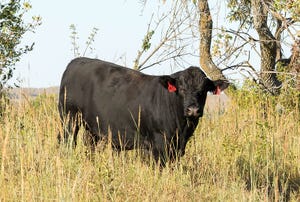Tips To Winterize Your Cowherd
The fall is coming to an end and for most farmers the crops are harvested, the calves weaned, and cows are preg-checked.
December 5, 2010

The fall is coming to an end and for most farmers the crops are harvested, the calves weaned, and cows are preg-checked. This is a great time for farmers to make plans for the winter for the cowherd, and if you take the time now to plan how to feed cowherd this winter, this can pay dividends in the spring and summer. So here are some simple tips to help winterize the cowherd.
1. Body condition score your cows. Weaning is great time to do this. If you didn't get this done, its not too late to do this before there is snow on the ground. After the calf is weaned, this is the period when a cow's energy requirement's are her lowest and cows can easily gain body condition during this period. Therefore, for your young and thin cows this would the most economically time to put on some body condition prior to winter and calving. One of the most mismanaged groups of cows in the herd is the young cows (3 to 4 years old) and can often be overlooked. Farmers should pay close attention to energy reserves of these cows.
2. Conduct a forage test on winter feeds. This can be valuable information to determine a winter-feeding strategy. This allows producers to match forages to the right stage of gestation and age of animal. Energy and protein intake of the cow during gestation is critical not only to her performance but the development of the calf. If cows do not intake enough protein or energy, this could lead to weak calves at birth, post-natal health problems, or poor growth performance. On the other hand, with rising feed costs farmers cannot afford to overfeed their cowherd. By knowing the quality of the forage, you can determine intake of feed instead of the cow, which will in turn save on feed expenses.
3. Make culling decisions. The easiest decision is to cull those cows and heifers which are determined open in the fall. Farmers can be tempted to give cows and especially heifers one more chance, but with rising feed costs can you afford to keep this unproductive females in the herd? There are several other factors to consider when making culling decisions.
To read the entire article, link here.
You May Also Like



